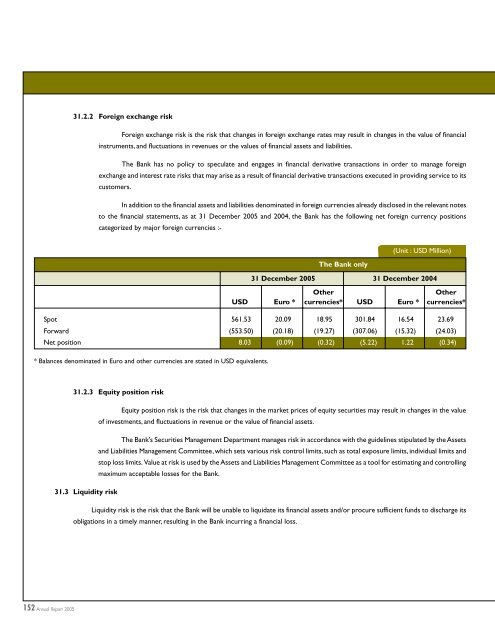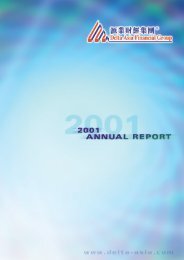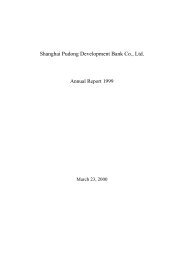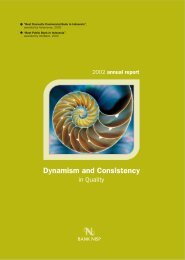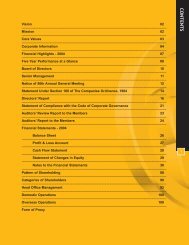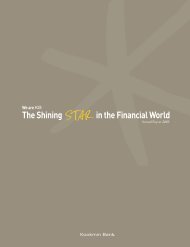2005 - Asianbanks.net
2005 - Asianbanks.net
2005 - Asianbanks.net
Create successful ePaper yourself
Turn your PDF publications into a flip-book with our unique Google optimized e-Paper software.
31.2.2 Foreign exchange risk<br />
Foreign exchange risk is the risk that changes in foreign exchange rates may result in changes in the value of financial<br />
instruments, and fluctuations in revenues or the values of financial assets and liabilities.<br />
The Bank has no policy to speculate and engages in financial derivative transactions in order to manage foreign<br />
exchange and interest rate risks that may arise as a result of financial derivative transactions executed in providing service to its<br />
customers.<br />
In addition to the financial assets and liabilities denominated in foreign currencies already disclosed in the relevant notes<br />
to the financial statements, as at 31 December <strong>2005</strong> and 2004, the Bank has the following <strong>net</strong> foreign currency positions<br />
categorized by major foreign currencies :-<br />
(Unit : USD Million)<br />
The Bank only<br />
31 December <strong>2005</strong> 31 December 2004<br />
Other<br />
Other<br />
USD Euro * currencies* USD Euro * currencies*<br />
Spot 561.53 20.09 18.95 301.84 16.54 23.69<br />
Forward (553.50) (20.18) (19.27) (307.06) (15.32) (24.03)<br />
Net position 8.03 (0.09) (0.32) (5.22) 1.22 (0.34)<br />
* Balances denominated in Euro and other currencies are stated in USD equivalents.<br />
31.2.3 Equity position risk<br />
Equity position risk is the risk that changes in the market prices of equity securities may result in changes in the value<br />
of investments, and fluctuations in revenue or the value of financial assets.<br />
The Bank’s Securities Management Department manages risk in accordance with the guidelines stipulated by the Assets<br />
and Liabilities Management Committee, which sets various risk control limits, such as total exposure limits, individual limits and<br />
stop loss limits. Value at risk is used by the Assets and Liabilities Management Committee as a tool for estimating and controlling<br />
maximum acceptable losses for the Bank.<br />
31.3 Liquidity risk<br />
Liquidity risk is the risk that the Bank will be unable to liquidate its financial assets and/or procure sufficient funds to discharge its<br />
obligations in a timely manner, resulting in the Bank incurring a financial loss.<br />
152


